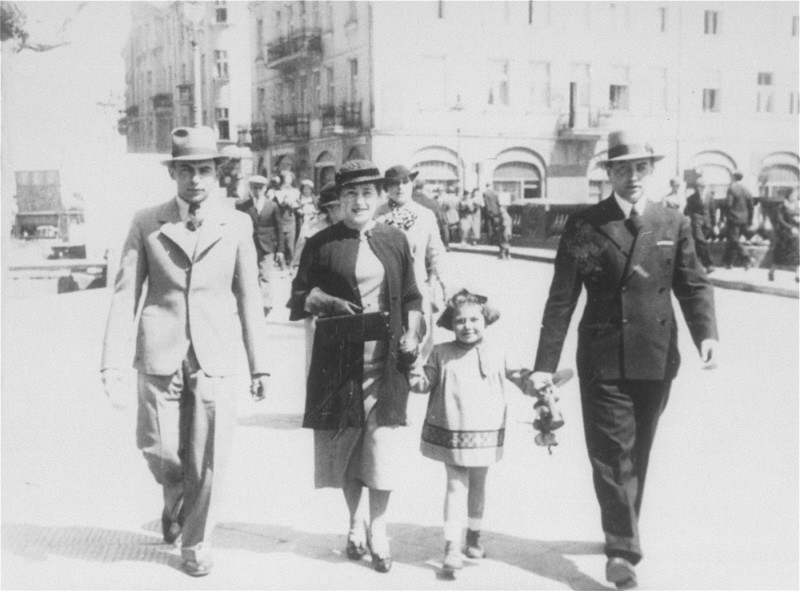
Jewish Community of Kalisz in the Interwar Years
Considered by many to be the oldest Jewish community in Poland, Kalisz had a population of 15,300 Jews (almost 30 percent of the total population), according to the 1931 Polish census. Famous for producing lace and other textiles, the Jews of Kalisz built a vibrant religious and cultural life and an active political life during nine centuries of residence in the town.
The Jewish neighborhood of Kalisz was in the northwest area of the central city, along the main boulevard—Nowa Street. Nowa and adjacent streets were the site of the Great Synagogue and the House of Study. Along its expanse were the offices of Jewish organizations and clubs, as well as many Jewish shops ranging from large stores to small shops to tiny holes in the wall: bookstores, taverns, shops selling Hebrew and Yiddish newspapers, butchers, fish stores, and boutiques.
The bridge that carried Nowa Street over a branch of the Prosna River was the heart of Jewish activity. It was a place of constant traffic, with Jews coming and going between their homes and places of work, synagogues, and communal institutions. On this bridge business deals were closed; the unemployed stood and hoped to be chosen for a few hours' work; people gave and listened to political speeches and arguments; vendors sold snacks and drinks.
Jews lived in other parts of town as well. Kanonicka Street was also a heavily Jewish area and served as home of the kehillah (community governing body) offices. Well-to-do Jewish families lived in various areas of the city.
Jewish café life also thrived. The most popular gathering place was the Udzialowa Café, where many people had regular tables and meeting times. Mayer Café, renowned for its delicious cakes, was the place for the Polish gentry, the Polish and Jewish middle class, professionals, and intellectuals. Young people hung out at the Café George, where members of all the Jewish youth movements could mingle—or, when politics dictated, sit at separate tables.
The Jews of Kalisz were not immune from the antisemitism that swept across Poland in the late 1930s. The town had an active antisemitic press, and bands of ruffians would often attack Jewish traders and peddlers on isolated roads as they were making their way to area markets. The situation deteriorated to the point that in 1936 a delegation of merchants traveled to Warsaw to present their case to the Prime Minister and the Ministry of Interior.
In 1937, Jews were forced to set up shop in a separate area in the town market, and Polish nationalists stood guard to ensure that Christians did not patronize Jewish-owned stalls. A year later, Kalisz was transferred to the Poznan district, where kosher slaughtering was prohibited. Even after intensive lobbying, the Kalisz slaughterers were permitted to produce only a small amount of kosher meat, which did not suffice for the Jewish population.
In 1939, on the eve of the German invasion, the Jewish population of Kalisz numbered over 20,000. There is no Jewish community in Kalisz today.
Critical Thinking Questions
- Learn about the history of the Jewish community in your country.

